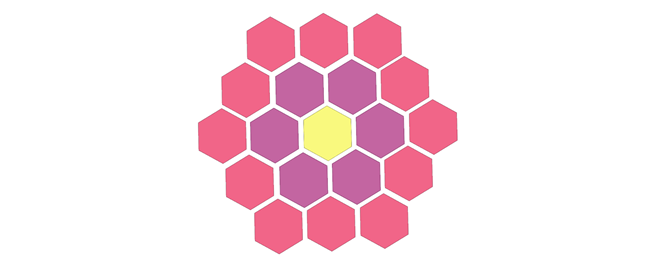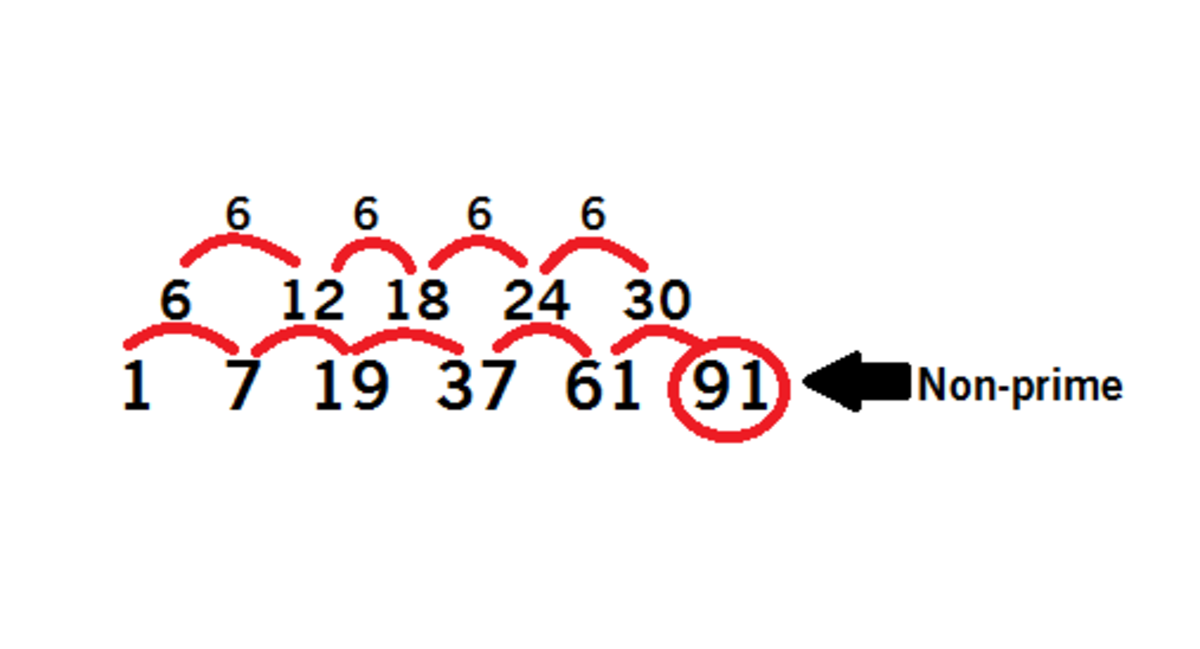The Prime Life of Hexagon Flowers
Equilateral hexagons can be put together in a flower-like way:
 From the picture above you can clearly see that 7 hexagons are necessary to built a "two-row"-flower. If we built a three row flower, 19 hexagons are needed.
From the picture above you can clearly see that 7 hexagons are necessary to built a "two-row"-flower. If we built a three row flower, 19 hexagons are needed.
 7 and 19 are both primes. If we add more rows will we ever be able to make a hexagon-flower with a
non-prime
total amount of hexagons?
7 and 19 are both primes. If we add more rows will we ever be able to make a hexagon-flower with a
non-prime
total amount of hexagons?
This section requires Javascript.
You are seeing this because something didn't load right. We suggest you, (a) try
refreshing the page, (b) enabling javascript if it is disabled on your browser and,
finally, (c)
loading the
non-javascript version of this page
. We're sorry about the hassle.
5 solutions
The number of hexagons with n rows can be expressed as 2 ( 2 2 n ( 2 n − 1 ) − 2 n ( n − 1 ) ) − ( 2 n − 1 ) .
Simplifying gives 4 n 2 − 2 n − n 2 + n − 2 n + 1 , and then finally 3 n 2 − 3 n + 1 .
For values of n from 2 to 5, this gives a prime number, however with n = 6 it gives 91, which is divisible by 13 and 7.
Long explanation can be found here: The Prime Life of Hexagons
In a nutshell: We can see that the total amount of hexagons needed is always one more than a multiple of six:
-
2 rows: 7 = 6 × 1 + 1
-
3 rows: 1 9 = 6 × 3 + 1
-
4 rows: 3 7 = 6 × 6 + 1
-
5 rows: 6 1 = 6 × 1 0 + 1
So all of these are prime, because for a number one bigger than a multiple of 6 (which is therefore divisible by two, three and other 2-/3-multiples), finding divisors is much harder, as 2, 3, 6 and so on will not work. And no divisors but one and the number itself are the definition of primes.
However if we go on and make our hexagon bigger, we get 91 hexagons. And 91 is divisible by 1, 7, 13 and itself.
6 rows: 9 1 = 6 × 1 5 + 1
So yes, it is possible, although primes occur frequently in this series. :)
In the second line, I’m sure you meant 19 hexagons and not 19 triangles.
In general, for a "k-row" flower, we have 1 + 6 ( 2 k ) hexagons. Obviously, this number will never be divisible by 6, but if we take our expression mod 7 we get ( k − 2 ) ( k + 1 ) ≡ 0 , so k = 6 will suffice.

Let the number of hexagons in a n -row flower be a n and a 1 = 1 . Then we note that:
a n + 1 a n + 1 − a n k = 1 ∑ n ( a k + 1 − a k ) a n + 1 − a 1 a n + 1 ⟹ a n = a n + 6 n = 6 n = k = 1 ∑ n 6 k = 3 n ( n + 1 ) = 3 n ( n + 1 ) + a 1 = 3 n ( n + 1 ) + 1 = 3 n 2 − 3 n + 1 Replace n with n − 1 for n ∈ N
And a 6 = 9 1 = 7 × 1 3 is a composite or non-prime .